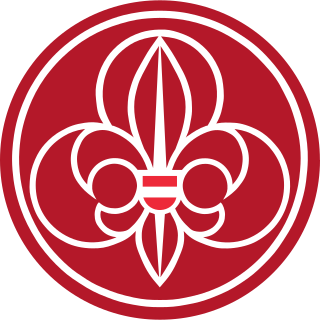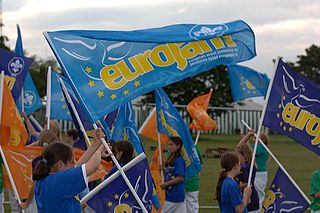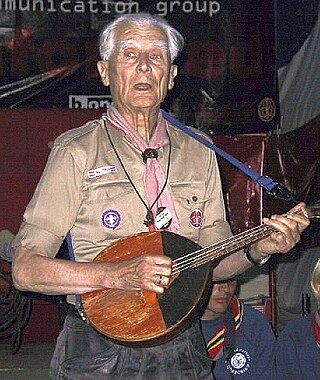Jamboree
As at the 1947 Moisson Jamboree, there were many difficulties to be overcome by the 10,000 Austrian Scouts. The Austrian government administered the country under foreign control, still divided into American, British, Soviet and French occupation zones. Preparations were started immediately, and the site near Bad Ischl in the Salzkammergut was selected in November 1949 while snow lay on the ground.
The budget for the Jamboree was fixed at six million Austrian Schillings, after J. S. Wilson added 15% to the Austrian estimate, anticipating that staples like milk would inflate in price, which they did. 500,000 Schillings were granted as a subsidy of the Austrian Federal Government. The final contribution fee for each participant equated to 338 Schilling (€24.56).
Doubts has been expressed because while Bad Ischl was in the American Zone, it lay close to the Soviet Zone. However, Austrian Scout troops had been permitted to start and carry on quietly in the Soviet Zone, and no attempt was made to interfere with them, so members of these troops also attended the Jamboree.
The main campsite was divided into seven different sub-campsites, with each one being named after a different federal state of Austria. Two further campsites also housed the heads of the delegation as well as guests. 521 so-called "Service Rovers" also helped support the setting up of the grounds.
During the event seven lit towers were erected to symbolize previous Jamborees. As the name of each Jamboree was announced, a flag was hoisted on one of the towers and the song of that Jamboree sung. Other key events included the official opening and closing of the campsite, a bridge building competition for partaking Scouts, and two bonfire evenings for both participants and visitors of the Jamboree.
One Scout attended from Japan, knowing no language other than his own and the word "Jamboree", yet he made the journey with no problem. The sight of Scouts waving the welcome flags at the airport told him that he had arrived at the right place.
Contingents came from Algeria, Armenia, Australia, Belgium, Bolivia, Brazil, British Guyana, Burma, Cameroon, Canada, Ceylon, Chile, Cuba, Cyprus, Denmark, Germany, Egypt, El Salvador, France, French Equatorial Africa, French West Africa, Gibraltar, Great Britain, Greece, Hong Kong, Iceland, India, Iraq, Ireland, Italy, Jamaica, Japan, Kenya, Lebanon, Liechtenstein, Luxembourg, Madagascar, Malaya, Mexico, Morocco, Malta, the Netherlands, New Zealand, Nigeria, Norway, Pakistan, Portugal, Sierra Leone, Southern Rhodesia, South Africa, Sudan, Sweden, Switzerland, Syria, Togo, Tunisia, the United States, Venezuela and Vietnam. Exile Scouts from Eastern Europe participated in the contingents of Germany and Austria.


















